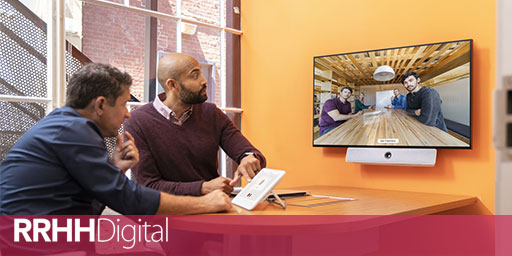With the rise of hybrid work, companies see an opportunity to reduce space and minimize expenses, but this model makes office occupancy rates even more unpredictable, as employees have greater flexibility in choosing where and when to do their jobs.
FOR HRDigital,
12:15 – 23 February 2021
The office will never be the same. 53% of large companies plan to reduce their physical space, and more than 75% will increase work flexibility. This is a direct consequence of the growth of remote work. Six out of ten organizations had more than half of their workforce telecommuting during lockdown, and 37% expect to maintain this trend.
With the rise of hybrid work, companies see an opportunity to reduce square footage and minimize expenses. But this model makes office occupancy rates even more unpredictable, as employees have greater flexibility in choosing from where and when to work.
“Before reducing office space, organizations must analyze the needs of their employees and understand the actual use of rooms”, Points Michel Rodrguez, Director of Collaboration at Cisco Spain. “Although each company is unique and based on its own data and culture, there are some key recommendations for optimizing the physical space and improving the work experience.”.
- Set the space precisely. To know if we have the correct number of offices, rooms and desks and their adequate dimensions, we must measure the available space, how the workers use it and their level of satisfaction. Spaces are dynamic, and can be improved through data and analytics. Technologies such as people counting sensors, room calendars, dashboards, and hotdesk teams help achieve this goal.
- Distribute the meetings during the day. The central hours of the day coincide with the peak of use of the meeting rooms. This causes the rooms to be underused in other time slots. Knowing the true availability of colleagues and other participants and coordinating alternate schedules can free up valuable space in the central hours.
- Consume resources in real time. While rooms reserved minutes in advance are almost always occupied, those reserved two weeks in advance have a 20% chance of being used. Assigning the meeting space in real time allows you to adjust the capacity and ensure the availability of video equipment and electronic whiteboards.
- Measure occupancy. Occupancy does not usually match the available space. Sometimes only two people occupy a room with ten seats because it is the only room with a projector or it is more isolated from noise. It is not only measuring the occupancy of rooms, also the total number of participants. There are dedicated devices such as Webex Room Navigator that continuously monitor occupancy.
- Integrate video. According to the companies surveyed, 98% of the meetings will have at least one remote participant. Video devices are now essential components of meeting rooms to avoid isolating teleworkers. They also allow building bridges between them.
Create a safe and healthy environment. 45% of workers believe that their company should turn the office into a safer space, investing in solutions such as contactless technologies and room capacity control. In addition, sensors built into Collaboration devices can collect information on noise level, ambient temperature, humidity, air quality, and lighting.
Nine out of ten workers say they are frustrated with office experiences, meeting rooms being reserved but not used and that the room equipment does not work the worst value. This is how 96% of organizations consider that they can improve smart technology work environments.
“Optimizing spaces does not only mean reducing meters and costs, but also improving the experience of workers, providing safe spaces and reinforcing productivity and team commitment”Concludes the head of Cisco.
* If you have found this article interesting, we encourage you to follow us on TWITTER
and subscribe to our DAILY NEWSLETTER.
HRDigital





:quality(85)/cloudfront-us-east-1.images.arcpublishing.com/infobae/SWBSHHZKPRHB3MJN3NHPP7YB4M.jpeg)